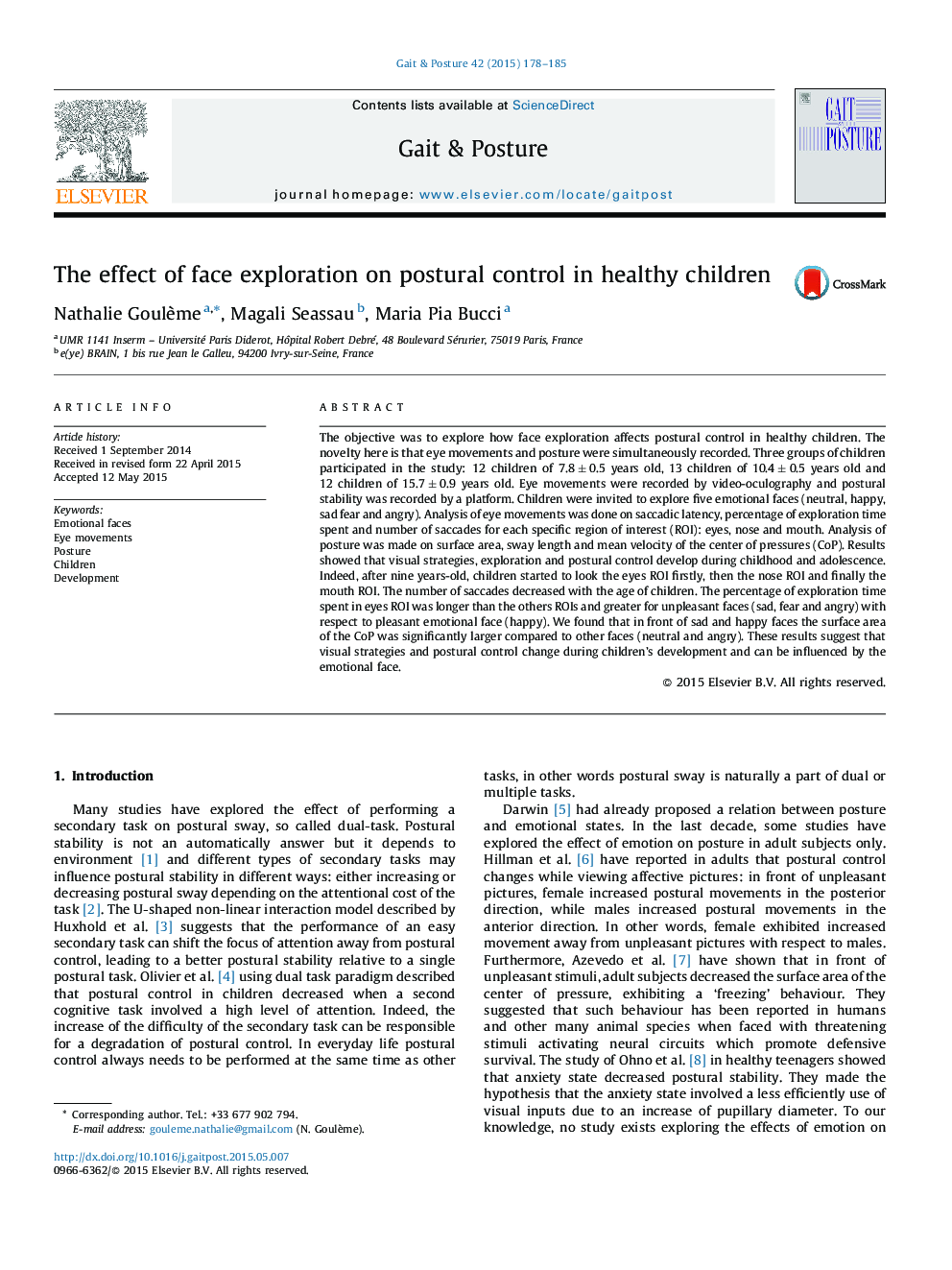| کد مقاله | کد نشریه | سال انتشار | مقاله انگلیسی | نسخه تمام متن |
|---|---|---|---|---|
| 6206024 | 1265637 | 2015 | 8 صفحه PDF | دانلود رایگان |
- The percentage of exploration time during postural measure increases with the age.
- The eyes ROI is more explored than the others ROIs as children grow older.
- Postural control change with age, sad and happy faces increase the surface area of the CoP only.
The objective was to explore how face exploration affects postural control in healthy children. The novelty here is that eye movements and posture were simultaneously recorded. Three groups of children participated in the study: 12 children of 7.8 ± 0.5 years old, 13 children of 10.4 ± 0.5 years old and 12 children of 15.7 ± 0.9 years old. Eye movements were recorded by video-oculography and postural stability was recorded by a platform. Children were invited to explore five emotional faces (neutral, happy, sad fear and angry). Analysis of eye movements was done on saccadic latency, percentage of exploration time spent and number of saccades for each specific region of interest (ROI): eyes, nose and mouth. Analysis of posture was made on surface area, sway length and mean velocity of the center of pressures (CoP). Results showed that visual strategies, exploration and postural control develop during childhood and adolescence. Indeed, after nine years-old, children started to look the eyes ROI firstly, then the nose ROI and finally the mouth ROI. The number of saccades decreased with the age of children. The percentage of exploration time spent in eyes ROI was longer than the others ROIs and greater for unpleasant faces (sad, fear and angry) with respect to pleasant emotional face (happy). We found that in front of sad and happy faces the surface area of the CoP was significantly larger compared to other faces (neutral and angry). These results suggest that visual strategies and postural control change during children's development and can be influenced by the emotional face.
Journal: Gait & Posture - Volume 42, Issue 2, July 2015, Pages 178-185
